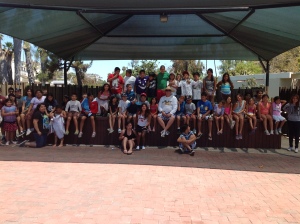Bullying typically involves others besides the tormentor and his or her target, and numerous peers are often aware of the bullying, and they must choose how to respond. The choice comes down to playing one of three roles: perpetrator, bystander, or upstander. I am a believer in the power of developing kids to understand what it means to be an upstander and I believe that we need to eliminate the role of the “Bystander” altogether.
To more clearly define the roles to be discussed: • Perpetrators join in the bullying, escalate the harassment, or initiate new attacks on the target later.
- Bystanders attempt to remain uninvolved in the situation, often by looking on silently or finding an excuse to walk away.
- Upstanders take action to oppose the bullying in some way. They might intervene directly and tell the tormentors to stop, but they need not put themselves at risk in order to be helpful. Upstanders might also respond in other ways such as making friends with the targeted student or seeking help from adults.
- Most students in a classroom or school do not bully others regularly and are not victimized by bullies, but that does not stop bullying from happening. A common misconception about these student ‘bystanders’ though, is that they typically remain neutral or try to support the victim when they see bullying occurring. Unfortunately, the truth is that students who observe bullying are much more likely to encourage or assist the bully than to attempt to help the victim!
Furthermore, in situations in which a group of students is bullying a child, bystanders may actively join in by taunting, teasing, or ostracizing the victim. Teachers are often surprised when they see a group of otherwise-friendly children egging on a bully or engaging in bullying behaviors themselves. One explanation for why bystanders may cross the line to help bullies is that, as part of a group, bystanders may feel less accountable for their individual actions. Another possibility is that bystanders feel justified in bullying the victim because they have come to believe that he or she ‘deserves’ such treatment.
Holding upstanders accountable for their behavior in bullying situations, reinforcing that they are the first line of defense, allows them to have positive direction in knowing how to get involved. Oftentimes children are not sure what to do in the moment they see bullying, and sometimes doing nothing is the easiest answer. I teach kids to learn what different situations they may encounter and then help them to role play to learn what the different options are. Seeing mock bullying, and then being able to discuss what the best actions are to take, allows children to respond instead of react when it really counts.
In and out of school, I encourage adults to facilitate group activities to encourage bystanders to develop positive relationships with potential victims, increasing the chances that they will be upstanders if a bullying situation arises.
Here are simple ideas for working with kids to become upstanders:
- Ensure that they understand the definition of “Bullying.” Children may not always know when their behavior crosses the line and becomes bullying.
- Create shared expectations for appropriate conduct and to build a common understanding of what behaviors should be defined as bullying.
- Create a shared definition for bullying with the class or with siblings by having them identify behaviors that are ‘bullying’ behaviors. List these behaviors on the board or somewhere in the house. If students focus only on examples of direct bullying, remind them not to overlook indirect bullying (e.g., gossip, excluding others from a group).Tell children that when you see examples of bullying occurring, you plan to intervene to keep the classroom and home a safe and friendly place for everyone.
With appropriate instruction and guidance bystanders can be empowered to take an active role in preventing bullying from occurring and to report bullying to adults when it does take place, becoming upstanders. To ‘win over’ bystanders to make them upstanders (what I would consider bully-prevention agents), the teacher and adults can make bystanders aware that their own behavior can encourage or discourage bullying, letting them know that they can and should become upstanders.
By teaching tools and phrases that upstanders can use to intervene when they witness bullying, my workshop gives practical concepts to help kids understand the role and importance of being an upstander. Building this role up as one of a leader, friend, and hero, I believe that we can make it “cool” for kids to be upstanders, and build an army to disengage bullying before it starts.
//


